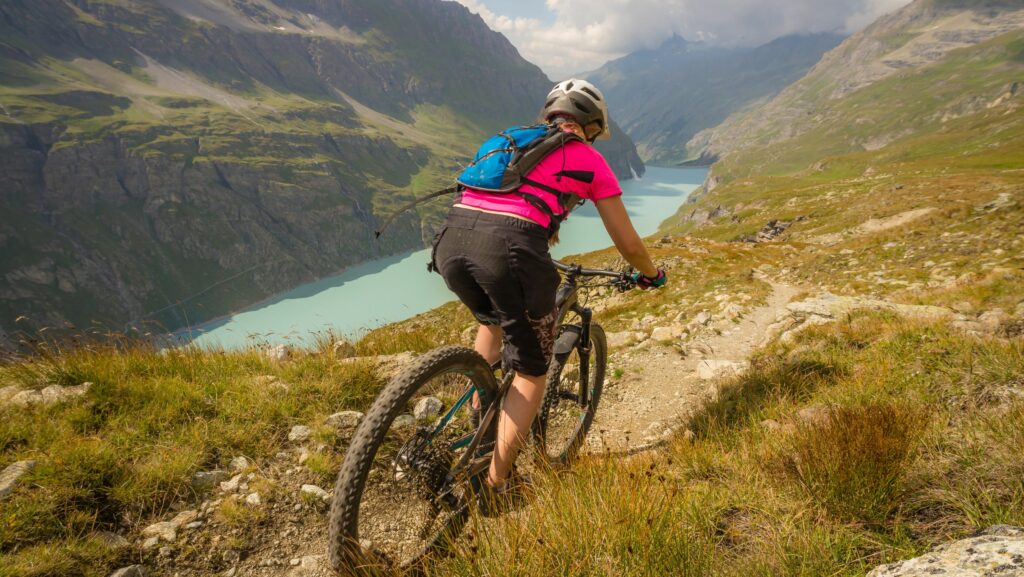For thrill-seekers and nature lovers alike, there’s nothing quite like the rush of a Rocky Mountain adventure. Whether it’s the breathtaking vistas, the invigorating hikes, or the sheer exhilaration of being at one with nature, the Rockies offer an unforgettable experience.
In this article, we’ll delve into the heart of these majestic mountains, exploring the best trails, the most awe-inspiring views, and the essential survival tips for the adventurous traveler. So strap on your hiking boots, pack your binoculars, and get ready for a journey into the wild heart of America’s most iconic mountain range.
Rocky Mountain Adventures
 Experiencing Rocky Mountain adventures begins on the footpaths and ridges. Extending over 355 miles, trails in the Rocky Mountain National Park offer variable lengths and difficulties to suite novices and seasoned trekkers alike. Opt for the Bear Lake Loop, a 0.8-mile trail, perfect for first timers desiring a gentle intro into Rocky Mountain hiking. Venture onto the Longs Peak trail, spanning 14.5 miles, a demanding route meant for experienced hikers. It’s advisable for trekkers to equip themselves with necessary gear such as sturdy boots and layered clothing, whilst remaining mindful of sudden weather changes.
Experiencing Rocky Mountain adventures begins on the footpaths and ridges. Extending over 355 miles, trails in the Rocky Mountain National Park offer variable lengths and difficulties to suite novices and seasoned trekkers alike. Opt for the Bear Lake Loop, a 0.8-mile trail, perfect for first timers desiring a gentle intro into Rocky Mountain hiking. Venture onto the Longs Peak trail, spanning 14.5 miles, a demanding route meant for experienced hikers. It’s advisable for trekkers to equip themselves with necessary gear such as sturdy boots and layered clothing, whilst remaining mindful of sudden weather changes.
Wildlife spotting adds an electrifying layer to the Rocky Mountain adventure experience. The region teems with diverse inhabitants ranging from mule deer, elk, black bears, to over 280 species of birds. The park’s Moraine Park stands as a prime location for spotting large herds of elk, particularly during autumn. Birdwatchers might appreciate the Cub Lake trail, renowned for its bird variety.
Best Times to Visit the Rockies
 The Rockies offer unique experiences throughout the year. However, timing is crucial when planning an adventure in this mountain range due to variations in weather conditions and available activities.
The Rockies offer unique experiences throughout the year. However, timing is crucial when planning an adventure in this mountain range due to variations in weather conditions and available activities.
The Rockies present an array of weather conditions, regardless of month or season. Summer, spanning from June to August, often features sunshine and warmth. But, thunderstorms occur almost daily, making early starts to hikes essential. For instance, Longs Peak with its challenging ascent observes frequently changing weather conditions and requires early morning ventures to ensure safety.
Winter, typically from November through April, sees heavy snowfalls, icy conditions, and extremely low temperatures. Some routes, such as the Bear Lake Loop, become cross-country skiing or snowshoeing trails during this period. The park receives an average snowfall of 60 inches, with January as the snowiest month.
Seasonal Activities
The different seasons in the Rockies host a variety of activities. Summer offers a plethora of hiking opportunities. Bear Lake Loop and Cub Lake trail are perfect options for nature trails, while Longs Peak poses a tough challenge for mountaineers.
During fall, which stretches from September to November, the park transforms into a colorful landscape due to the change in foliage. The Elk Rut, a phenomenon where elk engage in mating behaviors, is a remarkable event to witness at this time, particularly in Moraine Park.
Winter turns the Rockies into a haven for ice climbers and snow sports enthusiasts, with plenty of skiing and snowshoeing opportunities. Meanwhile, spring from May to June is the ideal time for bird watching when numerous migratory species visit the park.
Tips for a Safe Adventure in the Rockies
 Having a safe and memorable adventure in the Rockies involves preparation, awareness, and adherence to park rules and regulations. These tips and advice hinge on thorough planning, gathering essential gear, and following set safety guidelines.
Having a safe and memorable adventure in the Rockies involves preparation, awareness, and adherence to park rules and regulations. These tips and advice hinge on thorough planning, gathering essential gear, and following set safety guidelines.
Equipping oneself with essential gear makes Rocky Mountain adventures safer and more enjoyable. A backpack loaded with water for hydration, food for sustenance, and a first aid kit for emergencies forms the nucleus of hiking and camping essentials. Layered clothing, consisting of moisture-wicking base layers, insulating middle layers, and waterproof outer layers, provides optimal comfort in adamant weather conditions. Hiking boots, known for their sturdiness and ankle support, reduce the chance of foot injuries on rugged terrain. Navigation tools, such as a map, compass, or GPS device, guard against the possibility of getting lost. Lastly, bear spray offers protection against possibly aggressive wildlife in the park, exhibiting its value as a non-lethal deterrent.

